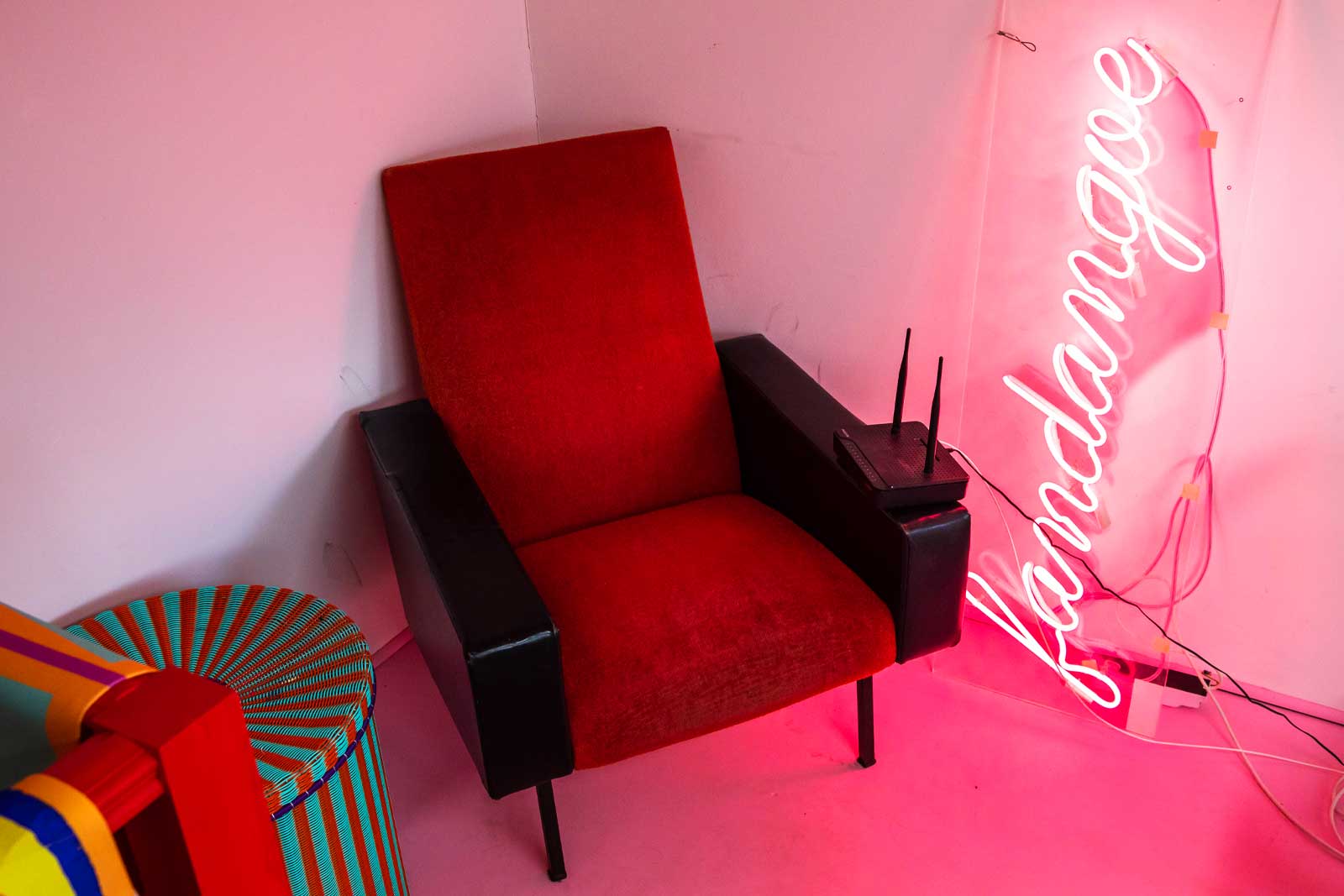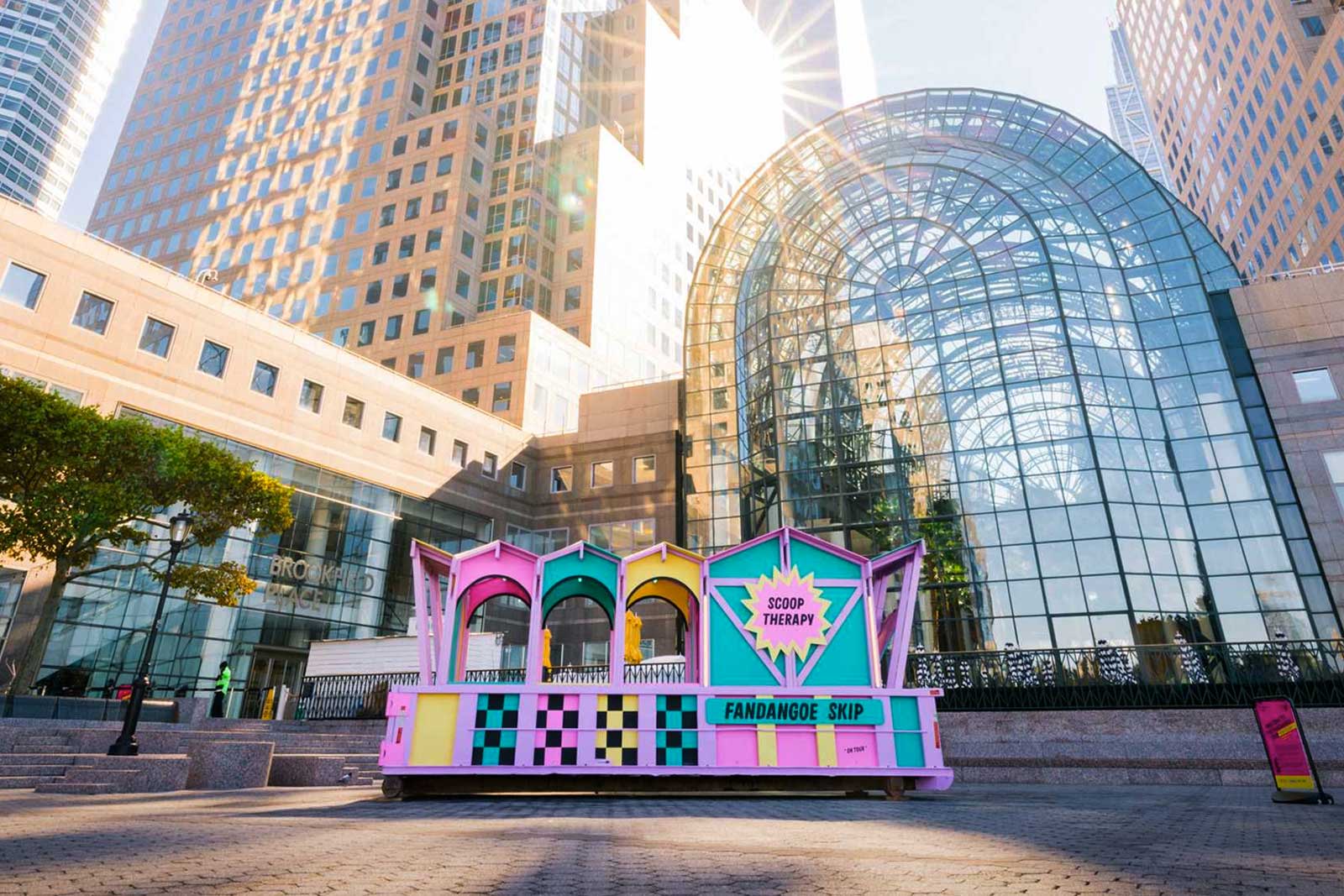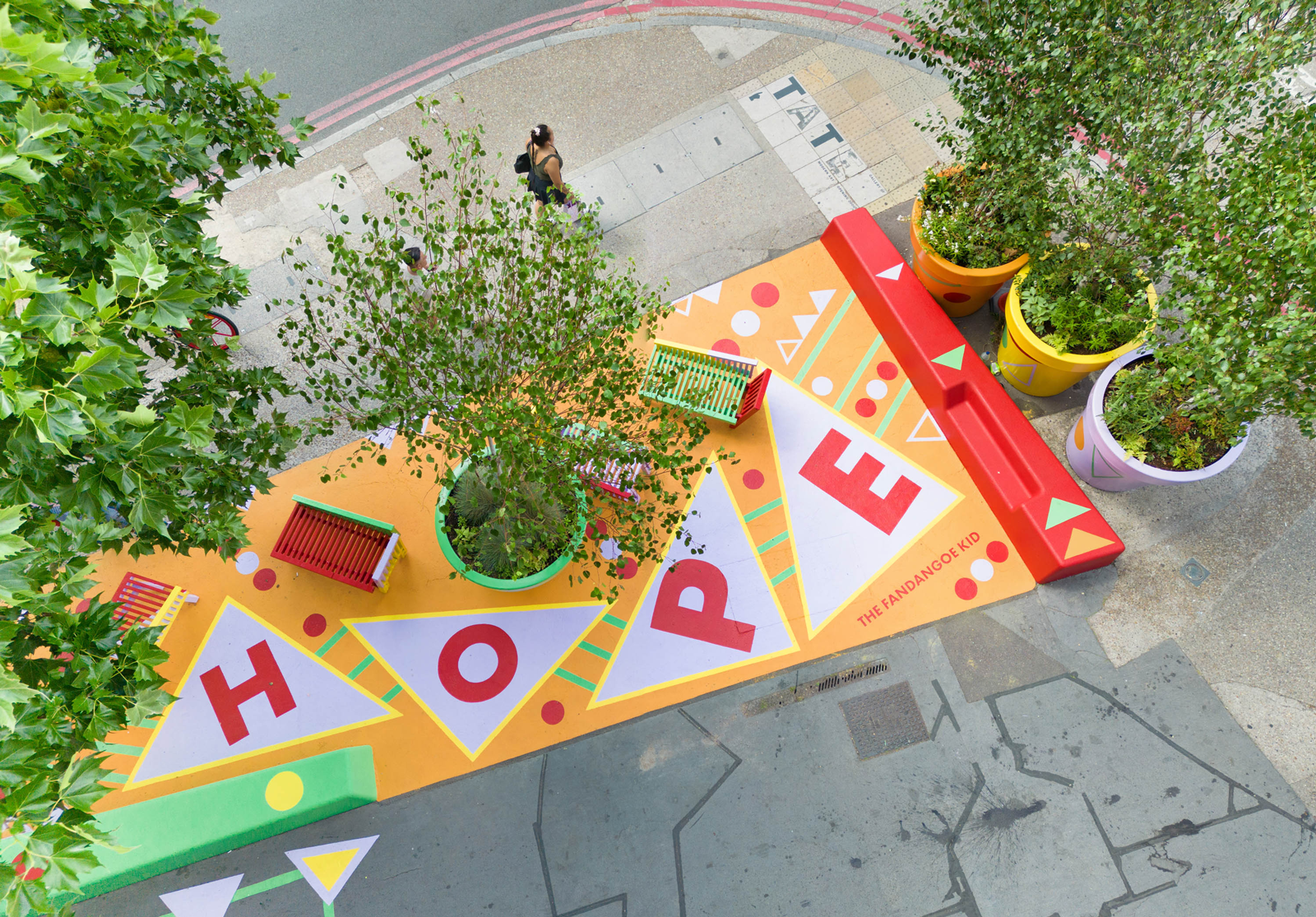Your Space Or Mine
Grief powers The Fandangoe Kid in beautiful and unexpected ways, including her latest invention with Carly Attridge of The Loss Project: the Grief Rave
Annie Nicholson, aka The Fandangoe Kid, is a visual artist whose bright patterns and colourful approach speak to her unique take on a universal subject matter – that of grief. It’s a subject she’s explored in myriad ways, including a pamphlet ‘Tender Hearted Bold Moves’ (Rough Trade Books, 2020), a film ‘Into Your Light’, an ice cream van that she parked up in New York on the site of the Twin Towers and a monthly Grief Mixtape that she hosts on Soho Radio, among other things.
The Londoner – who recently joined the ranks of post-Brexit Irish citizens – knows about the subject first hand. She went through major family bereavements including the death of her sister in an accident in New York in 2011, and of both parents.
Grief and loss of all kinds have become a powerful force in her work, including most recently, the Grief Rave. This latest project is a collaboration with The Loss Project founded by Carly Attridge, and the Street Soundsystem, creating dance spaces where bereaved people can dance it out.
Her billboard artwork for Your Space Or Mine tells a story about music and movement in bold primary colours, evoking the ways that the dancefloor can bring us together with loved ones – even those who aren’t with us any more. “I want people to feel the warmth of togetherness,” she says. “We know that can’t happen in this world – we can’t bring our living and our dead together – but we can cultivate that feeling. We can carry those we have loved and lost with us through life, with our feet and our moves and our bodies.” The accompanying words come courtesy of writer Lara Haworth.
31.03.23
Words by




 Tender Hearted Bold Moves
Tender Hearted Bold Moves
 Fandangoe Whip
Fandangoe Whip
 Into Your Light - Photogarphy by Tara Darby
Into Your Light - Photogarphy by Tara Darby












 Grief Rave
Grief Rave



 The Hope Garden
The Hope Garden
 The Hope Garden
The Hope Garden
 Fandangoe DISCOTECA
Fandangoe DISCOTECA




